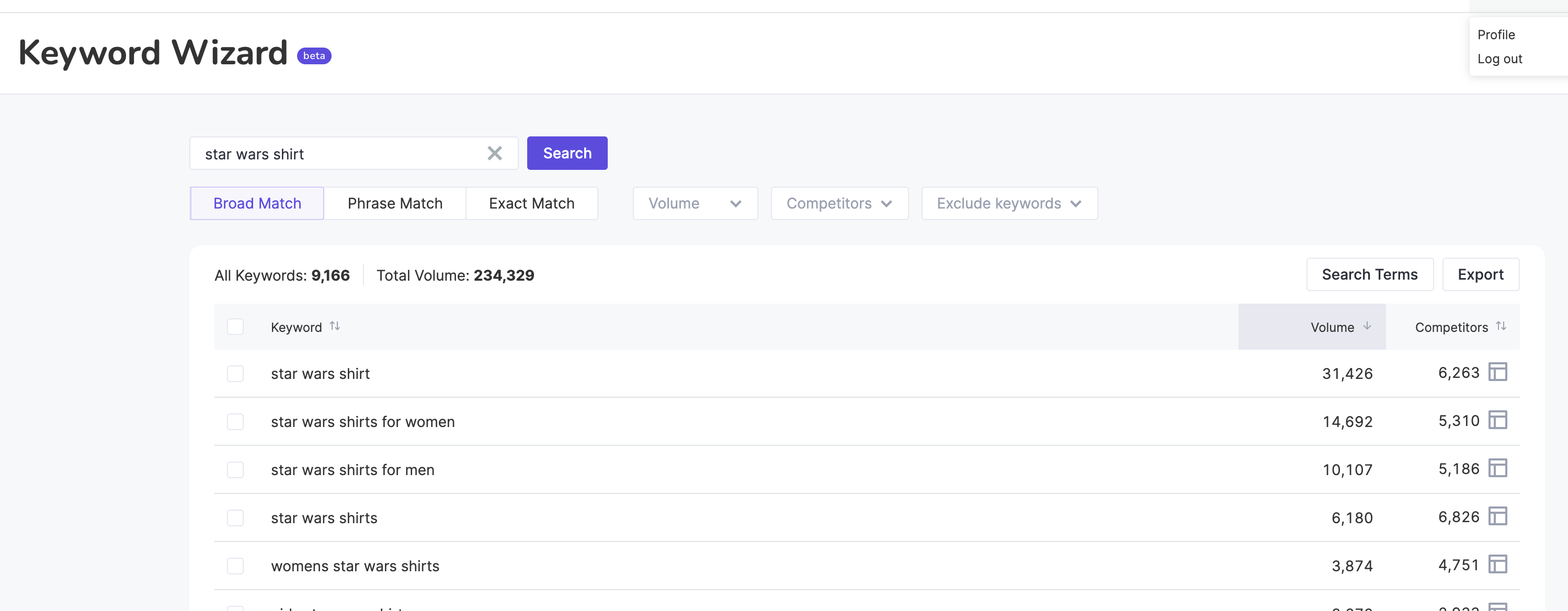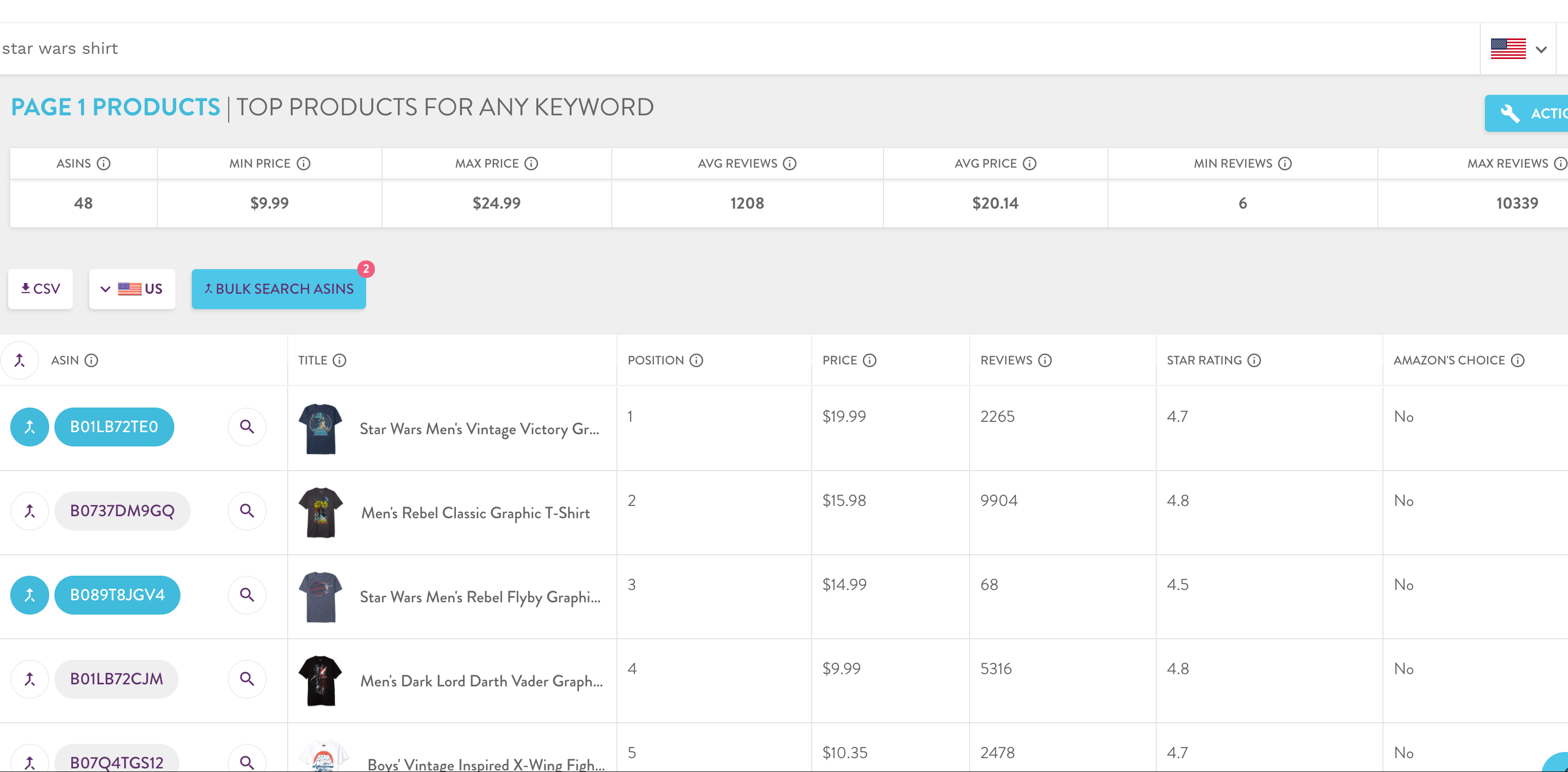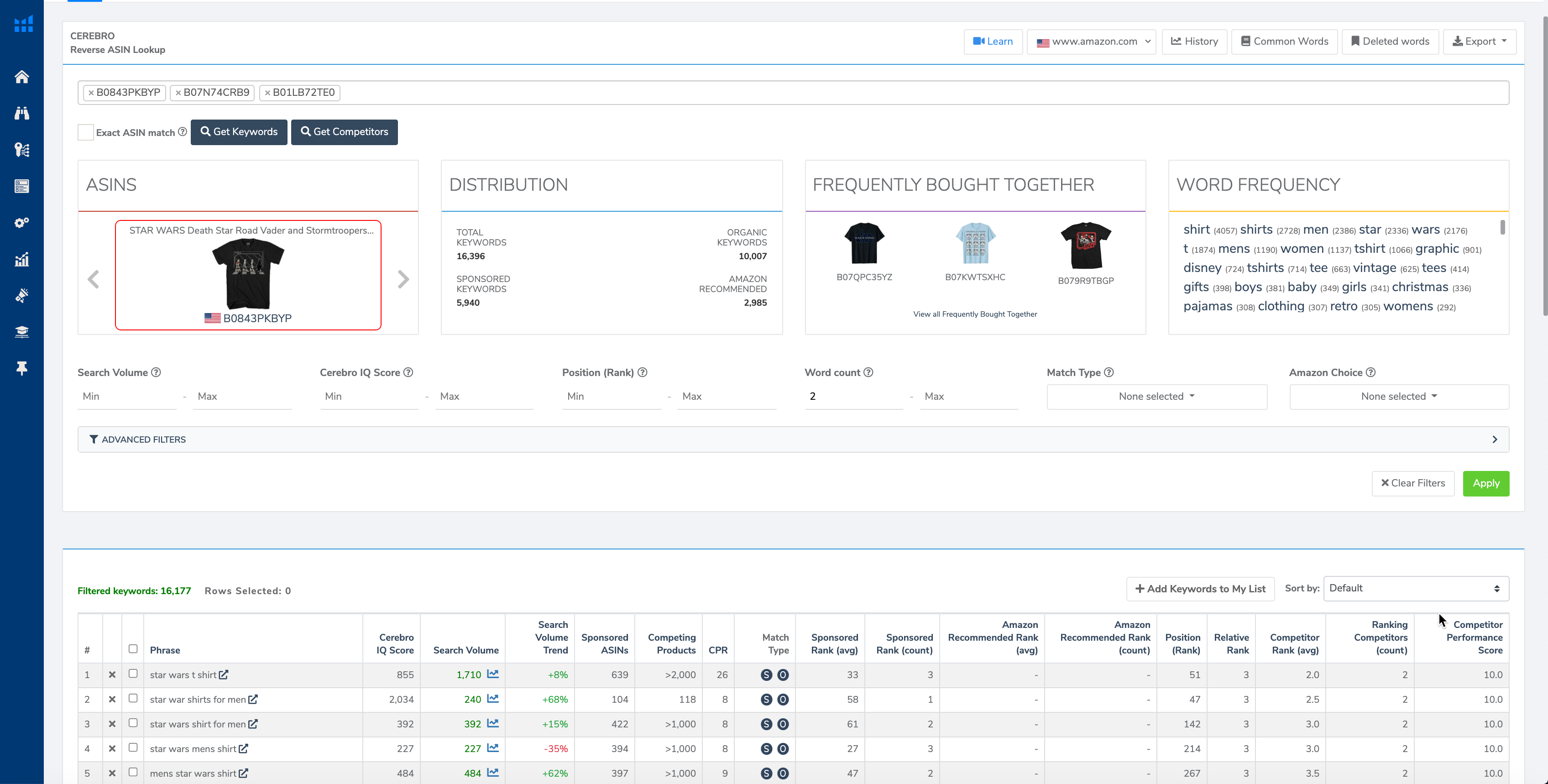Search is the primary way people find products on Amazon, so being indexed and ranked for as many relevant keywords as possible is crucial to your success as a seller.
However, hasty keyword research can lead to much frustration and limit the ability of your optimization to improve overall profitability and sales volume.
If you are not indexed for the correct words, being found by your customers will be difficult at best. As competition has become fiercer over recent, thorough keyword research that includes both long- and short-tail items can play a massive role in overall sales and profitability on Amazon.
This means that you need to be targeting more than just 10–25 keyword phrases to drive product sales.
In this article, you’ll walk through the basic keyword strategy for Amazon and discover three ways to farm the keywords that can bring you the most relevant, eager buyers.
While some products or marketing strategies require more advanced techniques for keyword research, these fundamentals can help you maximize your rankings on Amazon.
Basic Keyword Strategy for Amazon
Keywords behave differently on Amazon than on Google. Once you’ve indexed for words that make up the longer keyword phrases your customers might enter into the search bar, you can focus on ranking, which looks at keyword phrases.
For organic Amazon SEO, think of individual words that make up longer phrases. Then, when you’re optimizing your PPC campaigns and launch plans, you’ll think in terms of keyword phrases.
This means that when optimizing for Amazon, we want to ensure we’re including individual keywords, regardless of the order or grouping the customer might type in the search bar for organic Amazon SEO.
It is also important to know that for Amazon SEO, frequency is not a ranking factor.
Therefore, repeating the same keywords multiple times throughout your title, bullets, and back-end search terms is not going to send a stronger signal to Amazon that your item is a correct match for the customer’s search.
Amazon primarily looks at conversion history, while several other factors also play a role.
Now, let’s dig into three keyword research techniques you can use to improve your Amazon strategy.
1. Expanding Keyword Approach
The first and most basic way to identify keywords for Amazon is to use the expanding keyword approach.
This process works best for beginners, new-to-category products, or products that don’t have successful, closely related competitors already on Amazon.
Here, you begin with the keywords you already know you want your product to rank and index for.
You expand on them to identify longer keyword phrases that might be typed in by more relevant customers and, at the same time, have less competition, making it easier to rank.
The process for the expanding keyword approach is as follows:
Brainstorm All Potential Words That Could Be a Good Fit for Your Listing
Look at your product and think about how customers would describe it if they didn’t know your brand name or listing title.
- Think about how a customer would find your product if they couldn’t remember your brand or product name.
- Look at the words and use cases you put on your packaging.
- How would a customer describe the uses and benefits of your product?
Run the Words Through a Keyword Research Tool
After you’ve brainstormed as many words as possible, we can now use any of the popular keyword research tools on the market to expand your results.
 Sellzone, by Semrush, recently introduced a beta Keyword Tool that can be used with the Expanding Keyword Approach. MerchantWords and Helium 10 also both offer this capability.
Sellzone, by Semrush, recently introduced a beta Keyword Tool that can be used with the Expanding Keyword Approach. MerchantWords and Helium 10 also both offer this capability.As you enter your original keyword phrases into the tools, you’ll find additional keywords that help make up longer keyword phrases.
For example, if you type in a Star Wars shirt, then the program will generate a list of additional keyword phrases, such as [funny Star Wars shirt] or [Chewbacca Star Wars shirt].
Run the Expanded Keyword List Through a Frequency Counter
Once you’ve farmed the expanded keywords, then you want to use a frequency counter like Helium 10 Frankenstein, Merchant Word’s Keyword Explorer, or Write Words (which is free).
High search frequency is an indication that the word is being used more often.
We use frequency as an indicator of relevancy; additionally, it helps us identify keywords that make up the largest number of keyword phrases.
Write Your Title & Bullets
Now that you have a list of individual keywords to incorporate into your listing, you can begin to write your title and bullets.
Incorporate as many keywords as possible while focusing the content on conversion.
2. Competitor Keyword Approach
This method looks at what keywords competitors or closely related ASINs are already ranking for. We’re studying what is already working for our competitors to ensure we’re not missing sales opportunities.
This method utilizes any program that offers a well-tested reverse ASIN tool. This type of tool analyzes a particular ASIN or product detail page on Amazon and determines which keywords are already ranking well for that listing.
Because Amazon’s primary factor in ranking is conversion history, we can make an overgeneralized assumption that if a listing is already ranking well for a particular keyword phrase, then that keyword phrase should generate sales for that listing.
Here’s your process for the competitor keyword approach.
Start at Your Favorite Reverse ASIN Tools
Our favorites are Merchant Words Page 1 Products and Helium 10’s Cerebro. The process itself will slightly differ depending on the tool you’re using, but the overall approach is the same.
I’m just highlighting two tools we extensively use, but there are many options in the Amazon space that are great to use for this approach.
Once you’ve selected the tool, you’ll be using the following:
Merchant Words
- Identify the most relevant keyword for your product and enter it in the tool’s PA (Page 1) search bar. You’ll receive a list of ASINs related to that keyword.
- Select the ASINS that are the most relevant match for your product.
Helium 10
Enter your ASIN, and then select “Get Competitors.”
Or, add ASINs that are closely related and rank well for important keywords.
 MerchantWords Page 1 tool allows you to select the most relevant competitors and then see the keywords which those listings are ranking on page 1.
MerchantWords Page 1 tool allows you to select the most relevant competitors and then see the keywords which those listings are ranking on page 1.It is important, regardless of the tool you’re using, that you select only the most relevant ASINs.
If you select ASINs that are only broadly related, you’ll find irrelevant keywords that won’t be usable in composing a top-selling listing.
Locate the Frequency Counter and Arrange In Descending Order
Scan the results for the most relevant keywords.
Make sure to remove irrelevant words. If you find many, look at the ASINs you selected.
Once you’ve removed irrelevant keywords from the list, add these individual words into a frequency counter and incorporate the remaining results into your listing copy and backend structured data. Prioritize the higher-ranked relevant words on the frequency counter.
Note: For this approach, products that have multiple keyword profiles can be especially challenging.
If you consider a Star Wars T-shirt with one of the new characters on it versus a mug with the classic Chewbacca image, the fan base is different, the keywords for each trilogy are different, and the keywords related to the product medium (T-shirt versus mug) will be different.
So even though they might seem like related products, the keyword profiles of each product will be significantly different.
We generally limit our search for these reverse ASIN searches to keyword phrases that rank on page 1 or within the first 25 positions. This allows us to eliminate many irrelevant keywords that a product might be ranking for but that do not generate many product sales.
3. Layered Keyword Approach
For products with multiple keyword profiles such as a Star Wars T-shirt or mug, sometimes layering both techniques is necessary to ensure you’re getting all the relevant keywords without farming unnecessary, irrelevant words.
This is especially true for products that have a unique selling proposition or a special feature that your competitors do not.
If you only use the competitor keyword approach for these types of products, you will miss all the keywords that are related to that unique selling proposition.
That’s why the layered keyword approach is the more comprehensive option of the three.
The process for the layered keyword approach is as follows.
Start with the Expanding Keyword Methodology
Save your results in a text file, a collection in Merchant Words, or Helium 10’s Frankenstein.
All three are valid ways to store and build out your keyword research list.
Implement the Competitor Keyword Approach
Keep in mind that if you have a product that has two kinds of profiles, like in the Star Wars t-shirt example, you’ll need keyword research regarding T-shirts and keyword research around the character and franchise of that Star Wars character.
Add the Results
Now, add the results from the Competitor Keyword approach to your farmed keyword list from the Expanding Keyword methodology.
Make sure to remove any irrelevant words, just as you did before.
Run the Expanded Keyword List Through the Frequency Counter
After you have the combined list, we’ll use the frequency counter on it to identify the higher-ranking words from both methods.
Key Takeaways
In closing, layering both techniques allows a more complete profile. However, depending on the product and your level of expertise in keyword research, any of these research approaches will help you make sure that you’re integrating highly relevant keywords that can help you bring in additional traffic.
 You can use Cerebro by Helium 10 for a reverse ASIN tool as well.
You can use Cerebro by Helium 10 for a reverse ASIN tool as well.These techniques can also be used to determine what keywords are already in your existing listing to determine if your product is not selling because it is not indexed for as many keywords as your competitors are.
Helium 10 has a great tool called Scribbles. It enables you to upload your farm keyword list, and as you write the title and bullets, it crosses off the words you have included in your keyword research as you type. This is great if you are writing your original copy.
It is also helpful if you want to do keyword research on a product that you have already optimized. You can check to see if the most relevant keywords have already been integrated, or if you need to rewrite some of that content.
Always keep in mind that keywords on Amazon are indexed throughout the page.
While the title and bullets are most important, structured data and even reviews and conversion history can play a role in the words that you are indexed for.
As we are doing keyword research on Amazon, we always want to prioritize highly relevant keywords first, then consider frequency in search volume.
Amazon has strict guidelines on each area of the product detail page, including how long titles and bullets can be before they stop indexing.
That is why it is so important that you edit and optimize your list and focus on your most relevant keywords instead of trying to index for an infinite number of keyword phrases.
Last but certainly not least, keep your potential customer in mind with a balanced approach. Maximize the number of keywords in your listing without sacrificing that your customers get the information they need on whether this product is right for them.
Do not keyword stuff just to get more traffic; you can always add whatever keywords didn’t naturally flow in the copy in your structured data and backend keywords.
Indexing for keywords is only the first step. Once you have a keyword-rich product detail page, the next step is to use a combination of advertising, clippable coupons, and other legitimate ways of driving traffic and converting sales to show Amazon that your product is a good fit for those keywords.
More Resources:
- 5 Strategies Every Amazon Seller Should Be Following Today
- Amazon’s Search Engine Ranking Algorithm: What Marketers Need to Know
- Ecommerce Marketing: The Definitive Guide
Image Credits
All screenshots taken by author, July 2021





